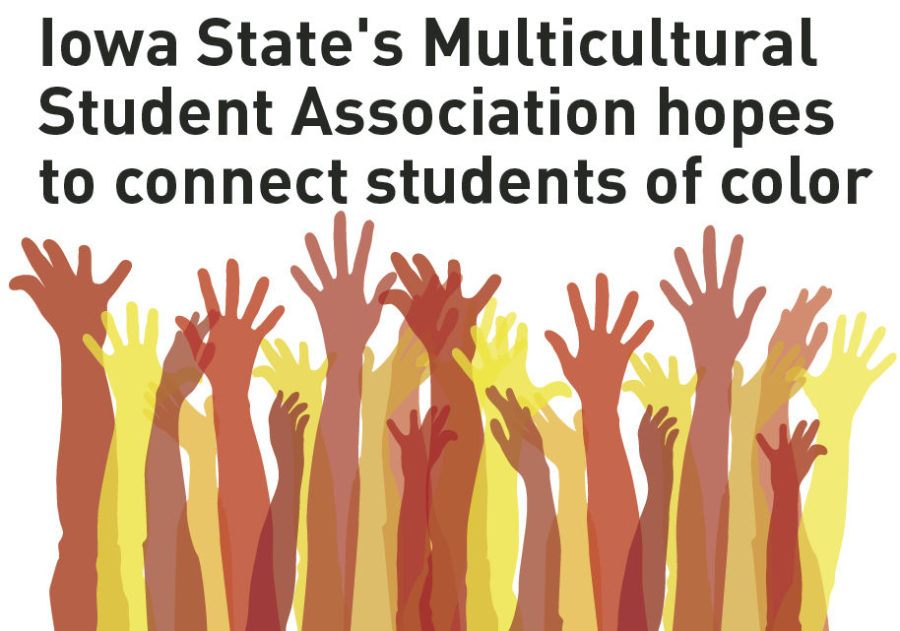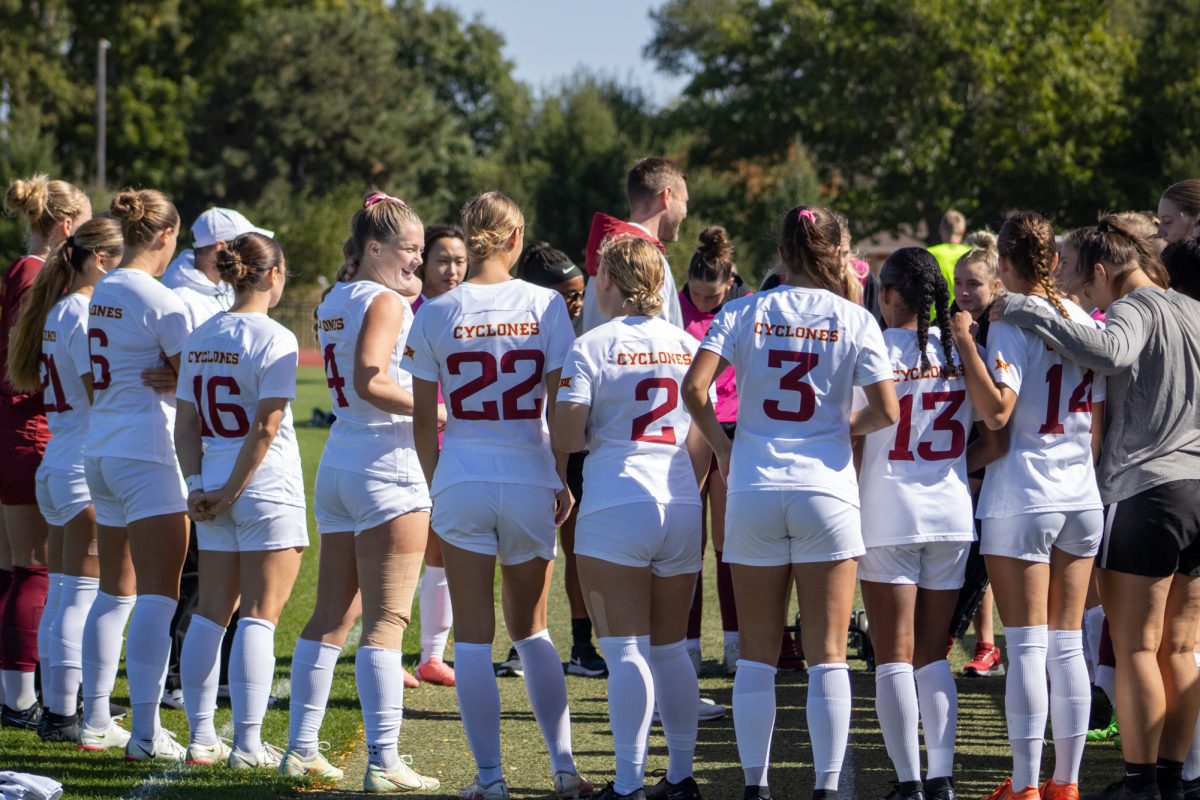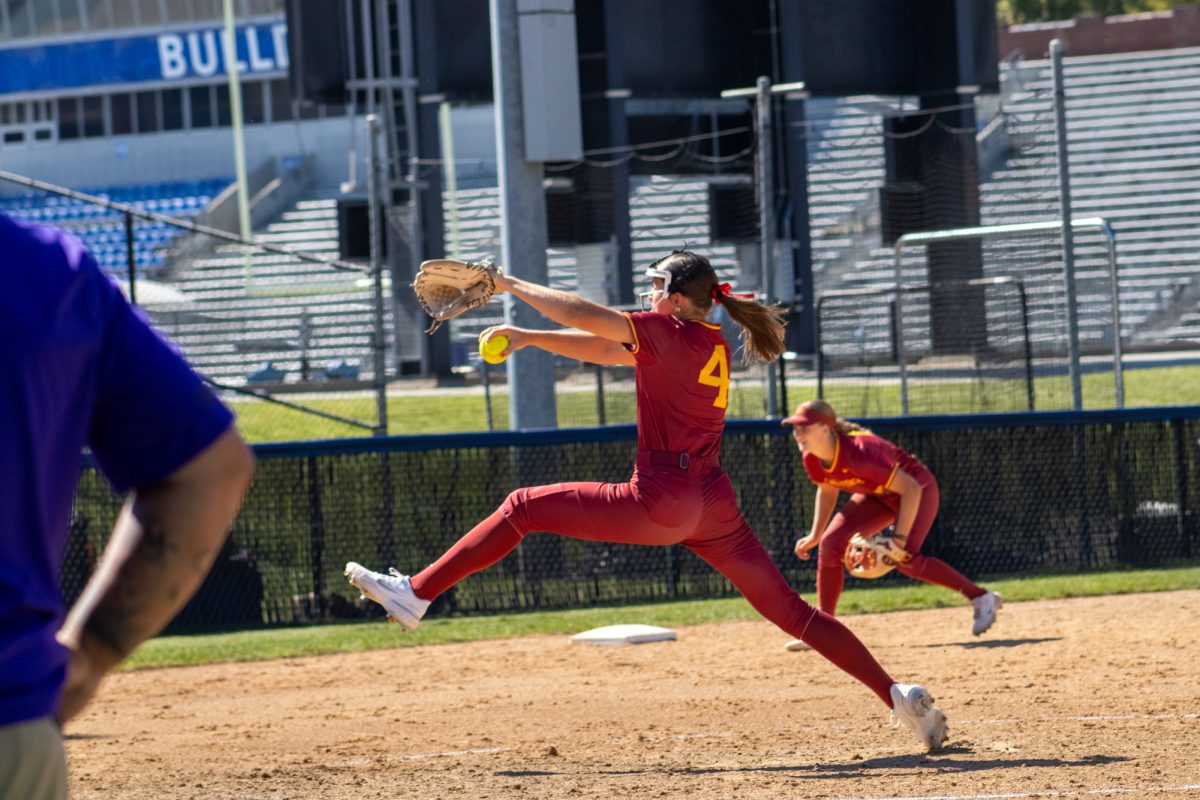Iowa State’s Multicultural Student Affairs hopes to connect students of color
The Multicultural Student Association aims to build diversity and inclusion on Iowa State’s campus. Denise Williams-Klotz, assistant director of Multicultural Student Affairs, hopes to create a community for students of color.
September 18, 2019
Editor’s Note: A previous version of this story incorrectly referred to Multicultural Student Affairs as the Multicultural Student Association. The story has been updated reflect the correct name. The Daily regrets this error.
Transitioning to a predominantly white institution such as Iowa State can be more than intimidating for students of color, but the Multicultural Student Affairs on campus is making efforts to ease these struggles.
Assistant Director of Iowa State’s Multicultural Student Affairs Denise Williams-Klotz shares the association’s hopes for students of color on campus.
“I think we can’t really build community for students, I think what our role really is is giving students everything they need for them to create that community,” Williams-Klotz said.
Building a multicultural community in a white space can be a daunting task, but the students of color on campus are not alone in their fight. From student organizations to faculty and staff, Iowa State has many allies for creating an inclusive and accepting environment.
Jordan Brooks — director of Equity and Inclusion of Multicultural Student Success for the College of Design — is one of these allies.
“A part of what I do, on a macro-level, is I work with students of color or folks with historically marginalized identities who are students, staff and faculty,” Brooks said. “I work with them to create an inclusive environment and understand themselves and their identity and how they bring that identity into the work that they do, and then how they create a space for others to do that fairly as well.”
Brooks said he recognizes that in predominantly white spaces, those with marginalized identities can often feel incapable and less than.
“I think being in predominantly white classrooms and the way people make a comment about your work or all the microaggressions can make you feel like ‘I’m not capable’ or ‘I’m not doing this right’,” Brooks said. “So I want us to build that sense of ‘No, I’m the baddest, I’m the greatest’ and ‘Yes, I can always learn things but I’m not going to let you shake me and think I’m incapable when I’m more than competent.’”
Fueling that sense of capability can begin in a number of ways. Whether it be through encouragement, resources or a community, the multicultural student association tries to provide all of these things and more for the multicultural community on campus.
One of the biggest ways the Multicultural Student Affairs helps build community for students is through student clubs and organizations. Williams-Klotz commented on how these can benefit not only students of color, but all students.
“Clubs and organizations, which are such a huge part of Iowa State in general, and I think for many of our students of color, is so much of a home and where they’re able to build that community,” Williams-Klotz said. “We do everything we can to support those organizations.”
A few of these student organizations and groups for students of color specifically are Multicultural Student Leadership Council (MSLC), the Multicultural Student Affairs’ online blog, The Hype, the George Washington Carver scholarship program, the Multicultural Vision Program (MVP) and Academic Program for Excellence (APEX), as well as many others.
These organizations work to benefit many students of color, from those who have an academic or financial need to those who have a voice that deserves to be lifted up and heard. Whatever it may be, the Multicultural Student Affairs said it works to give students of color an outlet.
Williams-Klotz called these organizations, “powerful places where students of color can come together, find each other […] have fun, relax, but also get what they need sometimes in a community sense, in a cultural sense and in just a social sense.”
While student clubs and organizations are both beneficial and important, Brooks expressed how being a resource to students of color goes further than co-curricular activities; it extends into the classroom as well.
“Students can’t have a great experience with me on the co-curricular side if they’re worried about the academics side and if […] the faculty and staff will help […] create an inclusive and welcoming environment,” Brooks said.
The Multicultural Student Affairs’ office has been encouraging faculty and staff to practice making their classrooms and areas a more inclusive space for students.
“Some members of colleges are focusing on doing the self-work to think about ‘How am I oppressing people? How am I supporting a system that oppresses people? How can I work to make my classroom more inclusive? And how can I adjust the curriculum so that it’s not so white, Western American?’” Brooks said.
This self-work is beneficial to students who don’t fit the mold of a typical white, American student because it allows an opportunity to recognize and celebrate our variety of differences.
“That work really is on the faculty and staff, that work isn’t on the students, but it’s the hope that it would benefit students in the long run to create those communities,” Williams-Klotz said.
Williams-Klotz discussed her final hopes for students of color individually, aside from finding that sense of community.
“For individual students, my hope is that someone entering Iowa State graduates from Iowa State having done what they wanted to do,” Williams-Klotz said.
While Williams-Klotz has high hopes for individual students, she also has wishes for all students from marginalized identities coming to Iowa State.
“It’s my hope that students of color are able to navigate a predominantly white institute like Iowa State and find their resources, because I do think that’s how you get to that finish line,” Williams-Klotz said, “Whether it’s an office, whether it’s a friend group, a faculty member, an advisor, a little bit of everyone, that people find those they can go to, they can rely on, the place where they can vent, sometimes the place where they can nap … where they feel comfortable and supported to reach those goals they have.”







